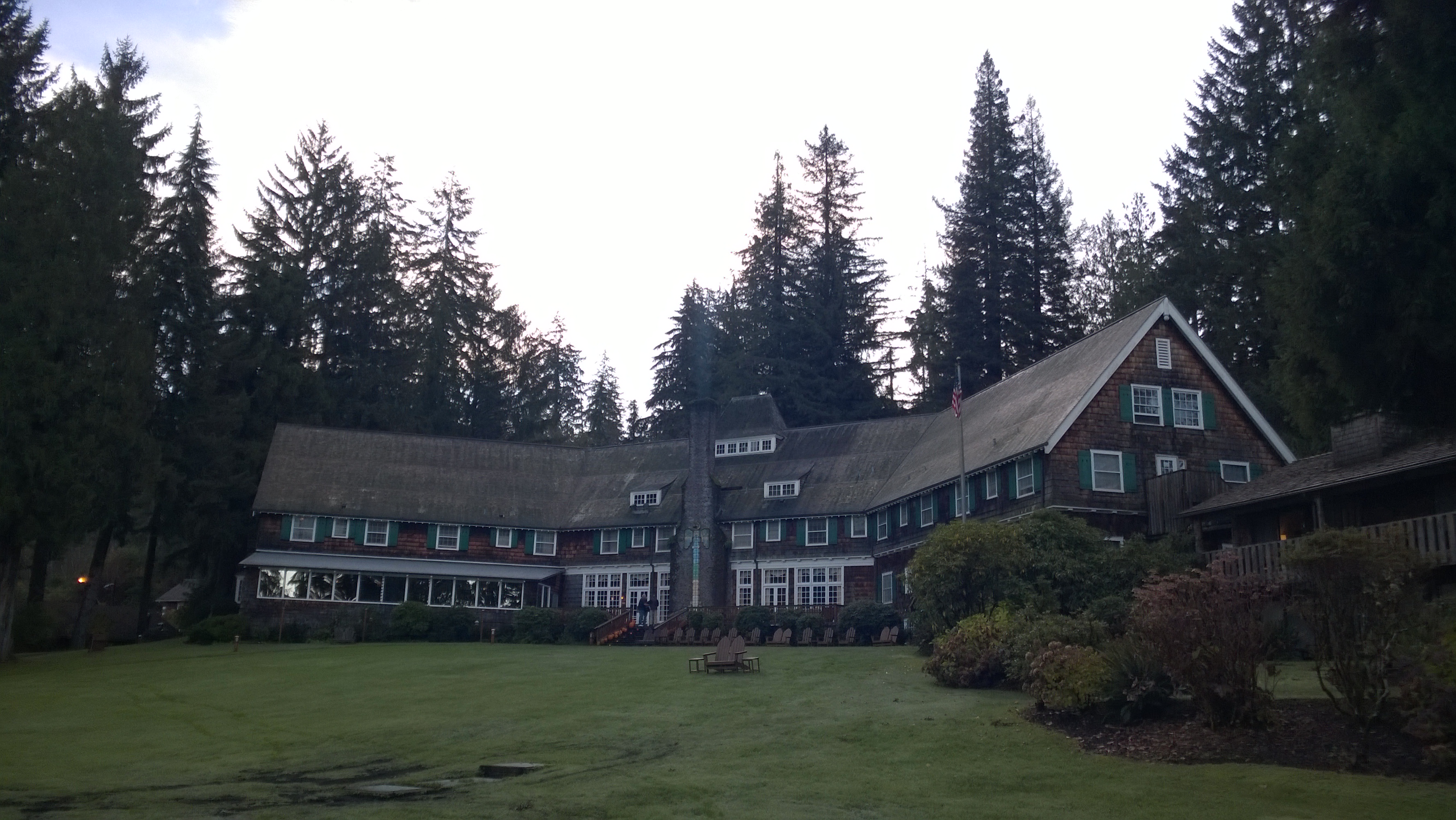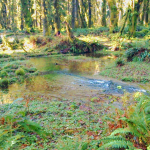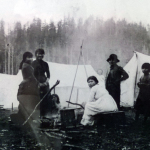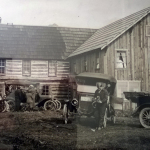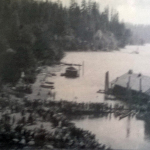A memorable meal at the Lake Quinault Lodge
“Yes, Mr. President. It is, indeed, breathtaking.”
Those are the words I imagine Washington State Governor Clarence D. Martin spoke in 1937 after President Franklin Delano Roosevelt first commented on the beauty of what was then known as the Mount Olympus National Monument. Of course, Governor Martin would likely have been hiding a smirk at having to reinforce such an obvious statement by FDR. After all, it was a natural beauty that nearly every Washingtonian had been appreciating since the dawn of man.
Before FDR visited the Olympic Peninsula, before his distant cousin – President Theodore Roosevelt – set the land aside to protect it from development at the beginning of the last century, and long before the first European and American homesteaders began taking advantage of the federal government’s Donation Land Claim Act in 1850, there were the Quinaults.
For centuries, the Quinault and Queets Indian tribes – along with the descendants of five other coastal tribes: the Quileute, the Hoh, Chehalis, Chinook, and Cowlitz – had made their homes along the beaches of the Olympic forest. One of their most treasured places is Lake Quinault, located at the south-western corner of the National Park (the eastern point of the Quinault Reservation), and one of the best places to stay when visiting the area is the Lake Quinault Lodge.
The original structure, named the Quinault Log Hotel, was built in 1894 by a homesteader and provided respite for weary travelers. Changing hands several times, it saw its heyday in the early 1920’s when owners realized they’d found a loophole in federal prohibition laws. Because the lake belonged to the Quinault Indians it was technically outside of federal jurisdiction, so the hotel built a floating dance hall which happened to attract many a thirsty dance enthusiast.
However, like everything else in the early part of the century, the Quinault Log Hotel caught fire one afternoon in 1924 and by that evening it had burned to the ground. All that remained was the fireplace and chimney, the hotel safe and the boathouse (because it was on the water)…and all of those things can still be found on the property. In fact, when the current structure was built in 1926 on the ashes of the former hotel, it was centered around the massive fireplace and chimney that had survived intact.
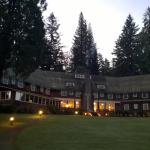 When it opened, the new Lake Quinault Lodge had relocated its floating dance hall onto dry land, dubbing it “the annex.” As the years progressed and the destination became more popular, more rooms were added to accommodate demand. By 1937, the Lodge was flourishing again – and in a prime position to play host to the leader of the free world.
When it opened, the new Lake Quinault Lodge had relocated its floating dance hall onto dry land, dubbing it “the annex.” As the years progressed and the destination became more popular, more rooms were added to accommodate demand. By 1937, the Lodge was flourishing again – and in a prime position to play host to the leader of the free world.
President Franklin Roosevelt began his trip through the Olympic Mountains in Port Angeles, where his motorcade was met at the county courthouse by thousands of schoolchildren lobbying for a national park. After an overnight stop at Lake Crescent in the north, the president and company proceeded to make their way south the following day. Though it wasn’t his first visit to the Pacific Northwest, it was probably his first time taking the scenic route.
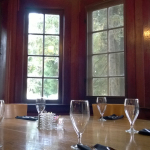 Having only one road to get from the north end of the peninsula to the south, the motorcade passed through a handful of small communities as it wound its way south along the coastline. The Roosevelt party eventually stopped for lunch that day at a bustling lakeside resort with a reputation for good food…the Lake Quinault Lodge.
Having only one road to get from the north end of the peninsula to the south, the motorcade passed through a handful of small communities as it wound its way south along the coastline. The Roosevelt party eventually stopped for lunch that day at a bustling lakeside resort with a reputation for good food…the Lake Quinault Lodge.
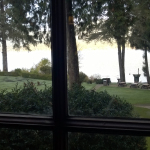 The meal by today’s standards sounds a bit peculiar, but against the backdrop of the Great Depression may have been considered a feast. The first course of Quinault dills, ripe olives and pickled peaches gave way to a locally-sourced clam chowder. The molded vegetable salad was followed by the main course of boiled Chinook salmon in egg sauce, whipped potatoes, green peas, Grays Harbor cottage cheese, currant jelly and a hot roll. Dessert consisted of wild blackberry pie followed by the choice of milk, coffee, tea, or buttermilk.
The meal by today’s standards sounds a bit peculiar, but against the backdrop of the Great Depression may have been considered a feast. The first course of Quinault dills, ripe olives and pickled peaches gave way to a locally-sourced clam chowder. The molded vegetable salad was followed by the main course of boiled Chinook salmon in egg sauce, whipped potatoes, green peas, Grays Harbor cottage cheese, currant jelly and a hot roll. Dessert consisted of wild blackberry pie followed by the choice of milk, coffee, tea, or buttermilk.
Before departing the Lake Quinault Lodge, the president met with a large crowd of onlookers in the spacious lobby – including Native American children in traditional dress displaying some of their crafts. The Roosevelts, Governor Martin and the rest of the party were later treated to a presentation by children of the nearby Taholah Indian School as well as a traditional Indian warrior display of strength…dozens of costumed tribesmen in dual war canoes paddling at great speeds as the motorcade passed.
When FDR returned to the nation’s capital, he hadn’t forgotten the time spent on Washington’s coast. Eight months later, Congress passed the bill designating the boundaries of Olympic National Park. In a speech during his visit, the president said of the need for preserving our breathtaking natural beauty, “we need it for us old people and you young people…[and] for a whole lot of young people who are going to come along in the next hundred years of America.”
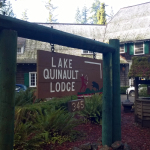 That, my friends, is us. Take a weekend, rain or shine, and visit the historic Lake Quinault Lodge. Eat a meal in what is now the Roosevelt Dining Room. And if you ask nicely, they may let you sit in the same place as the president who helped preserve our state’s heritage.
That, my friends, is us. Take a weekend, rain or shine, and visit the historic Lake Quinault Lodge. Eat a meal in what is now the Roosevelt Dining Room. And if you ask nicely, they may let you sit in the same place as the president who helped preserve our state’s heritage.
(View photos of Lake Quinault and Olympic National Park on Flickr or Pinterest.)

